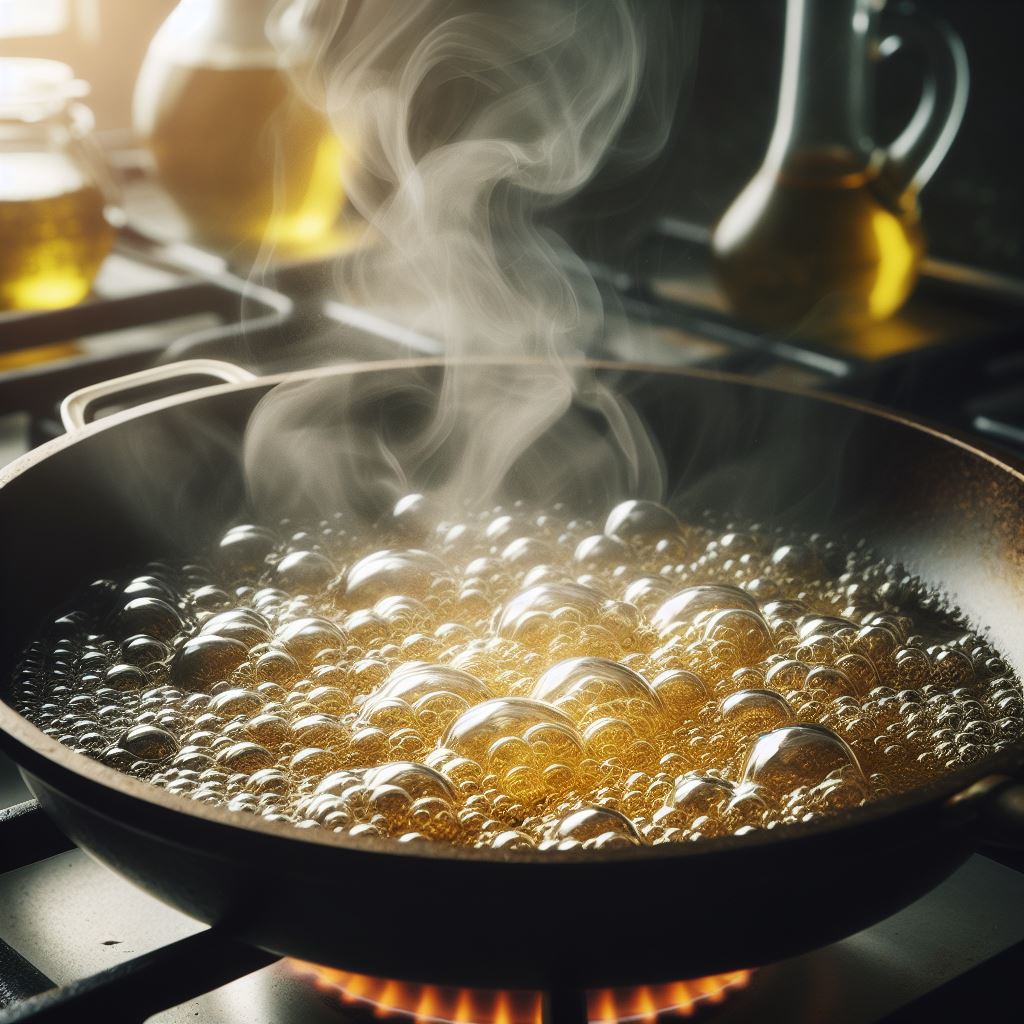Deep frying has become a popular cooking method for those who love fried foods. Deep frying is a great way to cook food without worrying about grease splatter or fire hazards. Since deep frying involves hot oil, it makes sense to clean the pan regularly. After you finish frying your food, drain the excess oil from the bottom of the pan. How long is deep frying oil good for? The rule of the thump is to use the oil 8 to 10 times. Dig into and learn more about How Long Is Deep Frying Oil Good For?
How to Keep Deep Fryer Cooking Oil Usable for Longer?
Deep frying is one of those cooking methods with no hard rules about how long you can keep the oil usable. However, we do know some things that make it easier to use the oil longer.
For example, you shouldn’t store the oil inside plastic bags because this could cause chemical reactions that might affect the quality of the oil. Also, storing the oil in a dark area will help preserve its quality over time.
You can also add salt to the oil to prevent oxidation. This process causes the oil to turn rancid faster. If you want to avoid buying new oil every month, adding salt to the old oil will extend its life.
Another thing you can do is filter out the debris that accumulates during storage. This way, you’ll be able to reuse the oil without worrying about clogging up your filters.
What is The Best Way to Store Oil After it Has Been Fried?
Frying oil doesn’t just go rancid because of heat; it does so because of oxygen. Oxygen molecules attach themselves to the fats in the oil, causing oxidation. Oxidation causes the oils to become unstable and break down into smaller compounds called free radicals. Free radicals attack cells, damaging DNA and proteins. This process eventually leads to cell death.
The best way to prevent this from happening is to keep the oil away from the air. Oil must be stored somewhere dark and cold where there isn’t much movement. You can put it in the refrigerator, but that won’t stop the oil from oxidizing. Instead, you want to store it in a sealed glass jar or bottle. If you’re storing it longer than a few weeks, you’ll want to refrigerate it.
You can also buy special storage bags designed specifically for cooking oil. These bags seal tightly around the oil and keep out moisture and oxygen. They come in different sizes depending on how many quarts of oil you have.
If you decide to reuse your oil, you’ll want to strain it again. After straining, pour the oil into a clean container. Don’t let it sit too long in the strainer, or it could start solidifying. When you’re ready to use it, warm it up slowly.

How Can You Tell If Deep Fryer Oil is Rancid?
The chef using it – and us – can easily smell and see fryer oil before using it. The oil should look clear, bright yellow, and sediment-free when used properly. It should also have a slight frothiness and never a strong odor. Your oil is probably rancid if you see any signs of discoloration, cloudiness, or a strange, musty taste.
If you’re looking for it – you’ll be able to detect rancidity fairly easily. Rancid oil will have a darkening effect on the surface of the oil and will often have a darker-colored foam floating atop it. This foam is a sign of polymers forming within the oil, which occurs when oils oxidize over time. Polymerization causes the oil to turn into what looks like hardened jelly, and it becomes less effective at keeping food warm.
How Long Does It Take for Frying Oil to Go Rancid?
There is no solid answer to the question, “how long do I have to fry my food in oil?” But several factors affect how much time you’ll have to cook with your current supply of cooking oil. These include the type of oil you’re using, the ingredients you’re frying, and whether or not you’re neglecting to clean off the residue left over from cooking.
The smoking point of different oils means different breakdown points throughout the entire frying process. For example, olive oil has a lower smoke point than vegetable shortening, which means that while it can withstand high heat, it won’t last as long once it starts breaking down. On the flip side, coconut oil has a very high smoke point, meaning it doesn’t break down as quickly as other oil types.
Suppose your food leaves behind crumbly bits in the oil that are difficult to clean out or you haven’t been cleaning them out. In that case, this can also accelerate the degradation process. Things like chicken tend to stick together and fall apart easily, making cleaning them out of the pan harder. Other foods that cause problems include breaded items such as fish sticks, french fries, and chips.
Frequently Asked Questions
How Long is Deep Frying Oil Good for?
After eight to ten uses, most oils need to be changed. After each use of your deep fryer, make sure you drain the oil from the gear, strain it, and then store it appropriately for use in the future. Until the next time, you need to use the oil, keep the filtered oil in a cool, dark place until you are ready to use it. Keep it away from food residues that will give food a bad taste.
Can I Leave Oil in My Deep Fryer?
No, leaving the oil in the pan is not a good idea. When you are not using your deep fryer for a long period, it is best to store the oil outside. However, short periods can be used to store oil. For this reason, you must filter the oil first to prevent any food debris from spoiling. You should also store the oil in an area without direct sunlight. If possible, store the oil in a refrigerator to maintain its freshness.
Can you Leave Peanut Oil in Your Deep Fryer?
Peanut oil is one of the most popular oils for deep frying. It has a high smoke point of around 450 degrees Fahrenheit, making it ideal for deep frying. But what makes peanut oil such a great option is that it is a plant-based fat, meaning it won’t impart any off flavors into foods like meat and fish. Plus, it has a neutral flavor and aroma so that it won’t mask food’s natural tastes. So, yes, you can leave your peanut oil in the fryer.
How does changing frying oils impact restaurants’ operational costs?
Changing frying oils regularly can indeed have significant implications on a restaurant’s operational costs. Cooking oils represent one of the major recurring expenses for any establishment offering fried foods. However, not changing oils frequently enough can lead to degradation in food quality which might result in loss of customers over time.
Conclusion
Deep frying is a fun cooking technique that allows you to enjoy delicious fried foods. However, there are certain precautions that you must take when deep frying. Make sure you follow the instructions if you want to reuse the oil.Regularly replacing cooking oils ensures not only delicious tasting meals but also healthier options for consumers – a win-win situation for both restaurant owners and patrons alike.

Welcome to Cooking Hacks, a place for all the food lovers out there! I have always been passionate about cooking and finding new ways to make it easier and more enjoyable.
